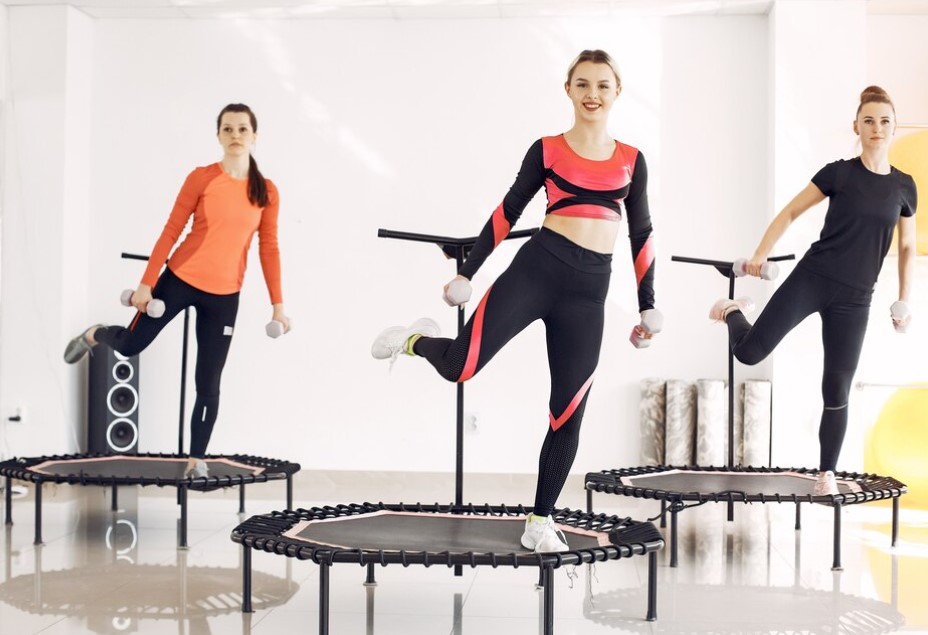Bouncing Sky High: An Introduction to Trampoline Gymnastics

Trampoline gymnastics is a competitive Olympic sport involving acrobatic movements performed on a trampoline. Trampoline gymnastics tests an athlete’s balance, strength, coordination, and aerial control.
History of Trampoline Gymnastics
Trampolining originated as a recreational activity in the 1930s using stiff canvas sheets hung on metal frames using springs. However, it was popularized as a competitive sport in the 1940s and 1950s by George Nissen, who invented the modern trampoline. The first national trampoline competition was held in the United States in 1947.
Trampoline gymnastics made its Olympic debut at the 2000 Sydney Games as an exhibition event. In 2016, it was included as an official Olympic sport at the Rio Games. Over the years, the difficulty and complexity of trampoline routines have increased significantly. Today, it is one of the most spectacular gymnastic events showcasing tremendous athleticism.
Some key milestones in the history of trampoline gymnastics:
- 1934 – George Nissen creates the first modern trampoline in his garage.
- 1942 – Griswold Nissen and George Nissen start the Griswold-Nissen Trampoline & Tumbling Company.
- 1947 – First US National Trampoline Competition held in Wyoming.
- 1964 – Trampolining included in the World Tumbling Championships.
- 1996 – Synchronized trampolining added to World Championships.
- 2000 – Trampolining debuts at the Sydney Olympics as an exhibition event.
Basics of Trampoline Gymnastics
Trampoline gymnastics involves performing acrobatics while bouncing on a specialized trampoline with a stretchy surface allowing gymnasts to gain height. The trampoline used for competitions has a dimension of 5m x 3m and is made using a combination of different materials to provide the right amount of bounce.
Participants perform routines with 10 contacts with the trampoline to complete 10 consecutive bounces. A routine lasts about 60 seconds and consists of different somersaults and twists in various body positions performed at great speed and height.
Common moves include pike, tuck, straddle, pirouettes, and twists performed in various combinations. Spin control, synchronization with the trampoline bed, and stable landings are critical for successful execution and high scores.
Here are some common trampoline skills and moves:
| Skill | Description |
|---|---|
| Pike | Body folded in half, legs straight and together |
| Tuck | Body folded in half, knees bent and tucked in |
| Straddle | Legs split apart while airborne |
| Twist | Rotating body along longitudinal axis |
| Barani | Forward somersault with 1⁄2 twist |
| Rudi | Backward somersault with 1 1⁄2 twist |
Competitive Format
There are two Olympic trampoline gymnastic events – individual and synchronized trampoline competitions.
The individual event has a qualification and final round. Gymnasts perform two routines in the qualifiers, with the top 8 advancing to the final. In the final, the qualification scores are disregarded, and gymnasts perform one decisive routine.
In synchronized trampolining, two gymnasts perform identical routines side by side aiming for perfect synchronization in their moves.
Routines are judged based on execution, difficulty, time of flight, and control. The scores from multiple judges are averaged to determine the final score.
Male and female gymnasts compete separately in the Olympics. Each country can qualify a maximum of 2 athletes in each individual trampoline event. The synchronized event has a maximum of 1 pair from each participating nation.
Training for Trampoline Gymnastics
Trampoline gymnastics requires tremendous strength, endurance, flexibility, and body control. Gymnasts start training at a very young age, mastering fundamental techniques like body positioning before progressing to complex skills.
Training focuses on developing spatial awareness, coordination, balance, core strength, and stamina. Gymnasts practise routines hundreds of times to ingrain muscle memory and consistency.
Coaches carefully monitor training to avoid overtraining injuries. Proper warm-ups, conditioning, skill progressions under supervision, and recovery are key.
In addition to trampoline training, gymnasts also work on strength and cardio exercises, plyometrics, and flexibility drills. Proper nutrition and rest are also vital for peak performance.
In conclusion, trampoline gymnastics is an acrobatic spectacle showcasing tremendous skill. From its recreational origins to an Olympic sport, trampolining has come a long way. With its ever-increasing difficulty, it continues to push athletic boundaries.